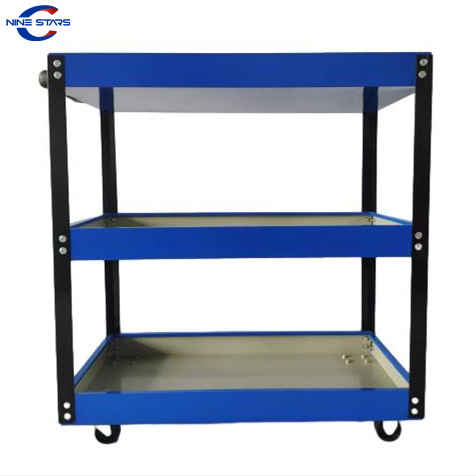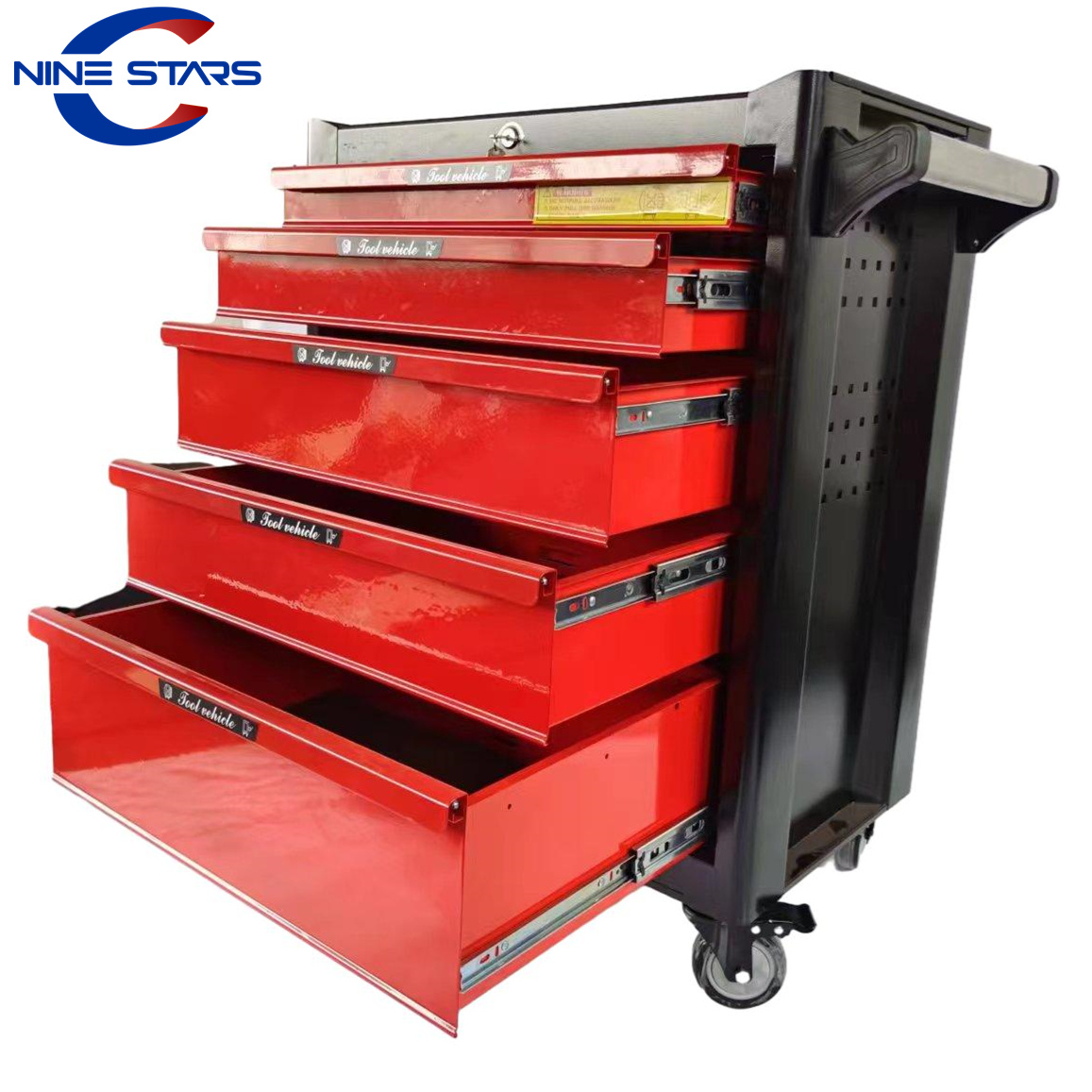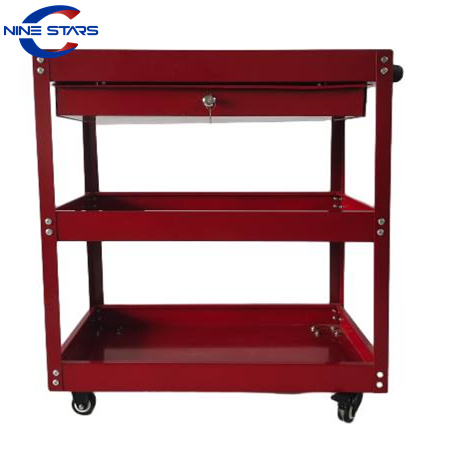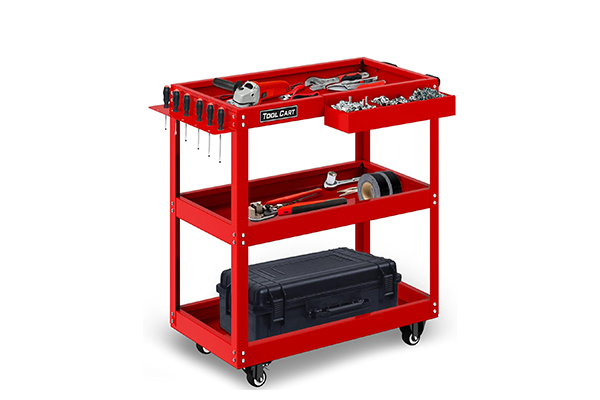Hello, I'm Allen. For over two decades, I've been running a factory in China that produces tool storage solutions for some of the biggest markets in the world, including the USA, Europe, and Australia. I've had countless conversations with buyers like Mark Thompson—savvy business owners who need to source high-quality, reliable tool carts and cabinets for their customers, from bustling automotive repair shops to large construction companies. They need durability and functionality at a competitive price. Through this experience, I've gained a deep understanding of what makes a tool cart truly great. A disorganized garage or workshop doesn't just look messy; it costs you time and money. The right rolling tool cart isn't just storage; it's a mobile command center for your projects. This guide will walk you through everything you need to know to choose the perfect tool cart to upgrade your workspace for 2025 and beyond.
What Makes a Rolling Tool Cart Essential for Your Garage?
In any busy workshop or garage, efficiency is everything. The time you spend walking back and forth to a stationary tool chest to find a specific wrench or socket is time you're not spending on the actual task. This is where a rolling tool cart becomes an invaluable asset. Its primary benefit is mobility. You can bring your entire set of essential tools directly to your project, whether you're working on a car engine on one side of the garage or a woodworking project on the other. This simple change can dramatically improve your workflow and productivity.
Beyond just holding tools, a good tool cart helps you keep your tools organized. With dedicated drawers and compartments, you know exactly where everything is. This organization prevents tools from getting lost, damaged, or cluttered on your workbench, creating a safer and more efficient workspace. For a professional technician or a serious DIYer, a well-organized cart is the foundation of quality work. It's not just about storage; it's about creating a system that supports your projects from start to finish. Think of it as a personal assistant that follows you around, always ready with the tool you need tools for next.
How Do You Differentiate Between a Tool Cart, a Tool Chest, and a Toolbox?
The terms toolbox, tool chest, and tool cart are often used interchangeably, but they refer to distinct types of tool storage. Understanding the differences is the first step in finding the right solution for your needs. A toolbox is typically a portable, single container with a handle, designed to carry a basic set of tools to a job site. It's small, compact, and meant for mobility over short distances.
A tool chest, on the other hand, is a larger, stationary storage unit, often consisting of multiple drawers stacked on top of each other. They offer significant storage capacity but are not designed to be moved frequently. Finally, a rolling tool cart (or trolley) combines the storage capacity of a chest with the mobility of a toolbox. It's essentially a cabinet on wheels, allowing you to easily roll your entire tool collection around your workspace.
| Feature | Toolbox | Tool Chest | Rolling Tool Cart |
|---|---|---|---|
| Mobility | Highly Portable (Hand-carried) | Stationary | Highly Mobile (Wheels) |
| Capacity | Low | High | Medium to High |
| Primary Use | Small jobs, on-the-go repair | Central workshop storage | Mobile workstation in a garage or workshop |
| Structure | Single container | Multi-drawer stack | Multi-drawer cabinet on casters |
What are the Key Features to Look for in a Heavy-Duty Tool Cart?
When you're ready to invest in a tool cart, especially a heavy-duty one, there are several key features to evaluate. These are the details that separate a premium, long-lasting cart from a flimsy one that will buckle under pressure. First and foremost is the construction material and build quality. Look for a cart made from high-grade steel. The thickness of the steel (measured in gauge) is a good indicator of its durability. A lower gauge number means thicker, more robust steel.
The second critical feature is the drawer system. The drawers should slide open and closed smoothly, even when fully loaded. The best systems use ball-bearing slides, which can handle significant weight without sticking. Check the weight capacity per drawer—this is a crucial spec that many people overlook. Finally, examine the casters, or wheels. For a heavy duty cart, you need large, durable casters that can roll easily over cracks and cords in the garage floor. At least two of the casters should be swivel casters with a locking mechanism to keep the cart stationary when you need it to be.

Why is Steel Construction the Top Choice for a Durable Toolbox Cart?
While some lighter-duty utility carts are made from plastic or thinner alloys, there's a reason why every professional-grade toolbox cart is built from steel. The answer is simple: strength and longevity. A garage or automotive shop is a demanding environment. Your tool cart will inevitably get bumped, loaded with heavy equipment, and exposed to chemicals and moisture. Steel construction is uniquely able to withstand this abuse without denting, cracking, or rusting, especially when it's finished with a high-quality powder coat.
In my factory, we reinforce the corners and use fully welded seams on our premium carts. This is a detail that many B2B buyers like Mark look for. They know that a bolted-together frame is inherently weaker and can loosen over time, leading to a wobbly, unreliable cart. A solid steel frame ensures that the cart remains rigid and stable, even when loaded with hundreds of pounds of tools. When you invest in a steel cart, you're not just buying storage; you're buying peace of mind that your tools are protected in a sturdy, secure unit that will last for years. It is the best material for a heavy-duty utility cart.
How Important Are Casters and Wheels on a Rolling Tool Cart?
The casters are the foundation of any rolling tool cart. You could have the most robust steel cabinet in the world, but if the wheels are cheap and flimsy, the entire cart is useless. The ability to smoothly roll the cart around your workshop is its core function. When evaluating casters, consider both their size and material. Larger diameter wheels can more easily navigate over obstacles like extension cords or uneven concrete. The wheel material matters, too—hard rubber or polyurethane casters offer a good balance of durability and smooth, quiet operation.
Another crucial feature is the combination of fixed and swivel casters. A typical setup includes two fixed casters and two swivel casters. This configuration allows you to steer the cart easily, much like a shopping cart. For maximum stability, the swivel casters should have a reliable locking mechanism. There’s nothing more frustrating or dangerous than a cart rolling away while you're trying to remove a heavy tool from a drawer. We put our casters through rigorous testing to ensure they meet a high weight capacity and can handle the constant movement of a busy automotive repair shop.

What Should Mechanics Look for in an Automotive Repair Cart?
Mechanics and automotive technicians have specific needs when it comes to tool storage. An automotive repair environment is fast-paced and requires a wide variety of tools, from small sockets to large power tools. A standard tool cart might not be sufficient. For mechanics, the drawer configuration is paramount. They need a mix of shallow drawers for organizing wrenches and sockets, and deeper drawers to accommodate bulky items like impact guns or diagnostic equipment.
An ideal mechanics' cart also offers features designed to enhance workflow around a vehicle. This can include a durable top surface that can double as a small workbench, built-in power strips for charging tools, and side trays or a shelf for holding parts during a repair. Some of our most popular models for the automotive sector are designed with this in mind. They often have rubber corner bumpers to protect a car's finish from accidental bumps and a secure lock to protect expensive tools. These details show a deep understanding of the professional's needs and are a hallmark of a high-quality automotive cart.
How Many Drawers Do You Really Need in Your Tool Storage Setup?
The number of drawers you need in a tool cart depends entirely on the size and variety of your tool collection. It’s a common mistake to just go for the cart with the most drawers. Instead, you should think about how you want to organize your tools. A cart with many shallow drawers is perfect for someone with a large collection of hand tools like wrenches, pliers, and screwdrivers. It allows you to lay everything out in a single layer, making items easy to find. This is where foam inserts can be incredibly helpful for keeping every socket in its place.
Conversely, if you have a lot of bulky power tools, cases, and other large items, a cart with fewer, deeper drawers might be more practical. Many people find the best solution is a combination of both. A popular configuration is a tool cart with a few shallow drawers at the top for frequently used items and progressively deeper drawers below. For example, a quality 5-drawer mobile tool cabinet offers a versatile mix for most users. Look for drawers with a high weight capacity (often rated in lbs) and smooth, ball-bearing slides. A single drawer that can hold over 100 lbs is a sign of exceptional quality.

Can a Tool Cart Also Function as a Mobile Workbench?
Yes, absolutely! Many modern rolling tool carts are designed with this dual functionality in mind, making them an incredibly efficient use of space in a smaller garage or workshop. A cart that doubles as a mobile workbench typically features a solid, flat top surface made from materials like thick steel, butcher block wood, or a durable composite. This provides a stable surface for assembling parts, making small cuts, or mounting a vise.
This ability to integrate a mobile work surface with your tool storage is a game-changer. You can roll your workbench and all your tools directly to your project, saving steps and keeping your main workbench clear for larger tasks. When looking for a cart for this purpose, pay close attention to the overall stability and the quality of the locking casters. You need the cart to be rock-solid when you're working on it. A heavy duty frame and robust casters are essential to prevent any wobbling or movement. It provides that crucial extra space exactly where you need it.
What Accessories Can Enhance Your Tool Cart's Functionality?
A basic tool cart is great, but the right accessories can transform it into a highly specialized and efficient workstation. These add-ons enhance the cart's usability and allow you to customize it to your specific workflow. One of the most popular accessories is a side shelf or tray. These are perfect for holding small parts, aerosol cans, or tools you're actively using, so they don't clutter up your top workspace.
Another fantastic accessory is a pegboard side panel. This allows for vertical tool storage, giving you quick access to frequently used items like hammers, pliers, and wrenches. Many of our models are designed to easily integrate these modular components. Power strips are also becoming a standard feature on many high-quality carts. Having multiple outlets right on your cart is incredibly convenient for charging cordless tool batteries or running corded power tools without creating a trip hazard with extension cords. Other useful accessories include paper towel holders, screwdriver racks, and even mounted trash cans to keep your workspace tidy.

How to Choose the Right Tool Cart to Upgrade Your Workshop for 2025?
As we look toward 2025, choosing the best garage tool cart means thinking about both your current needs and your future projects. To choose the right cart, start by taking inventory of your tools. What do you have now, and what do you plan to buy in the next few years? This will help you determine the size and drawer configuration you need. Don't just buy a cart that fits your tools today; buy one with some room to grow. It's a long-term investment in your workshop's organization and efficiency.
Next, consider your workspace. A compact cart like an economical three-layer tool trolley might be the best option for a small garage, while a larger workshop can accommodate a wider, more substantial tool chest on wheels. Finally, set a realistic budget but be prepared to invest in quality. While there are cheap options available from places like Harbor Freight, a slightly higher investment in a cart with better steel, smoother drawers, and more durable casters will pay for itself many times over in frustration-free use and longevity. As a manufacturer, I can tell you that the difference between a budget model and a professional-grade one is significant. When you're ready to upgrade, look for a robust and versatile tool storage solution that will serve you well for years to come.
Post time: 11-06-2025



